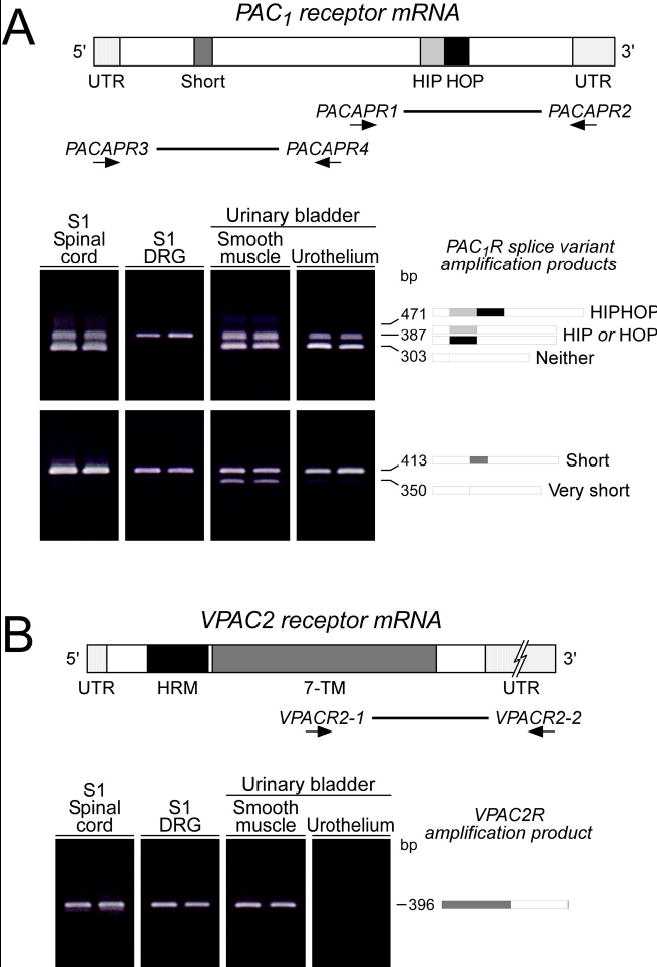Figure 1.

A. Lower urinary tract (LUT) tissues express PAC1 receptor variants. Complementary DNA templates were prepared from rat S1 spinal cord, S1 dorsal root ganglia (DRG) and bladder detrusor and urothelium total RNA. The region spanning the alternative splice site for the HIP and HOP exons within the third cytoplasmic loop was amplified using PACAPR1/2 oligonucleotide primers. Six third cytoplasmic loop isoform fragments containing neither, one or both HIP and HOP cassettes can potentially be amplified with these primers. LUT tissues express PAC1 receptor isoforms in a tissue-specific manner. S1 DRG express predominantly the one cassette isoform; other tissues possess both the null and the one cassette variant. Schematic shading: Dark grey, short region containing exons 4 and 5; light grey, HIP exon cassette; black, HOP cassette. Thick line, region amplified using PACAPR1/2 primers. Lower urinary tract (LUT) tissue expression of PAC1 receptor isoforms also result from alternative splicing in amino-terminal extracellular domain. Complementary DNA templates from LUT samples described above were amplified using primers PACAPR3/4 which flank the amino-terminal extracellular domain splice site. The amplified fragments of indicated sizes represent isoforms with both (short) or neither (very short) exons 4 and 5. All LUT tissues express the short variant; urinary detrusor smooth muscle also demonstrates very short PAC1 receptor expression. Shading in schematic denotes alternatively spliced exons. Thick line, region amplified using primers PACAR3/4. B. VPAC2 receptor expression in LUT tissues. cDNA from LUT tissues were prepared as described for amplification using oligonucleotide primers VPACR1/2 that span the carboxy-terminal domain of the 7 transmembrane (7-TM) receptor. All LUT tissues except bladder urothelium express VPACR2 receptor transcripts. Dark grey, 7 transmembrane domain; black, hormone receptor domain (HRM). Thick line, region amplified using primers VPACR1/2.
